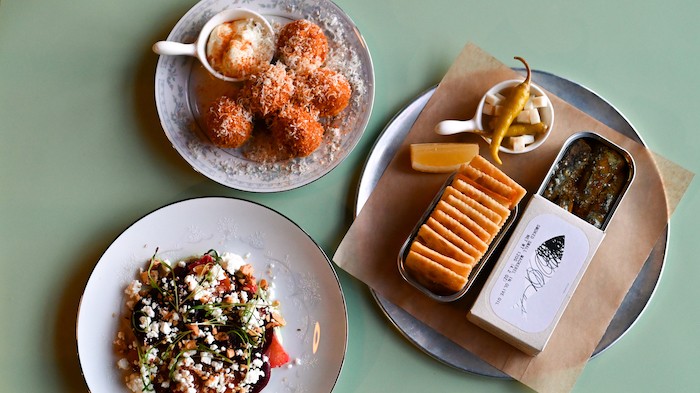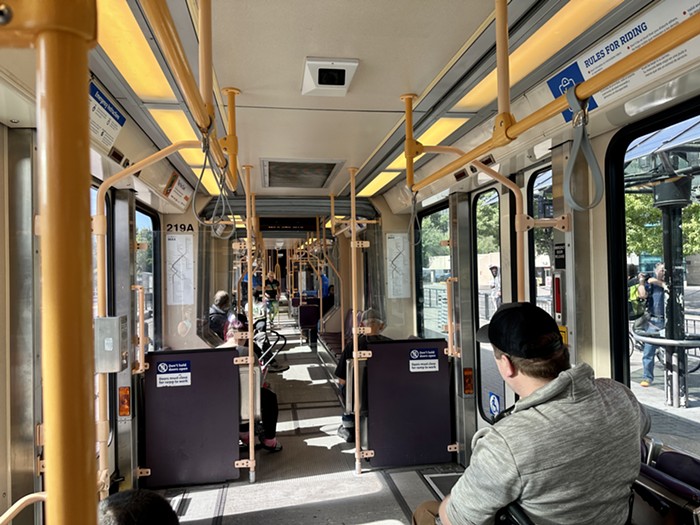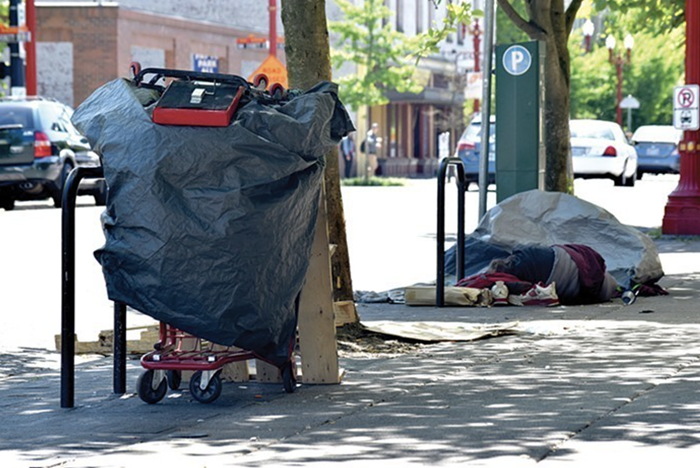In the artist's statement that accompanies Roadside Attraction, photographer Paula Rebsom explains how she and sculptor Stephanie Robison share an interest in "the ways in which we, as a culture, mediate our interactions with nature." Based on the work in this collaborative exhibition, the impulse behind that mediation is a drive to read the natural world in relation to the safety and order of constructed environments (i.e., civilization). In a way, we can only interpret wilderness as an antithetical setting to the homes and buildings we inhabit. As the show's title implies, nature is merely a novelty or spectacle for us to observe from the comfortable remove of a passing car.
In Rebsom's two enormous Lambda prints, she presents two images of Mt. Hood—but in her depictions, the majestic mountain vista is obscured by familiarly dreary domestic spaces. In the first, we see a tiny peak through a pair of attic windows. In the second, the mountain appears as a reflection in a sliding deck door. The subversion of scale in Rebsom's photographs—in which the sublime mountaintop is dwarfed by windows and doors—reconsiders how we value the great outdoors vs. the carpeted indoors. For Rebsom, the former is clearly the culturally devalued half of that binary opposition.
Robison's work more provocatively dwells within the interstices of the natural and the architectural. In "Cloud Cover with Bricks," the best of her three pieces, Robison represents both spheres with a cloud and a brick wall. An enormous easel-like structure, made of unfinished scrap wood, hoists a voluptuous white fabric cloud, which billows and sags like one of Claes Oldenburg's soft sculptures. Beneath it, a rickety lattice of wooden beams props up a brick wall (although Robison's bricks are made of a vinyl-like material). Like a pair of dimensionless stage props, both the cloud and the wall call attention to themselves as representations, physically dependent upon the wooden scaffolding that supports them. This deliberate focus on artifice becomes an examination of art-making and mimesis in general. After all, in art, the untamed phenomenon of the world can be examined from a detached, highly controlled perspective: a wilderness of possibility rendered safe as houses.












